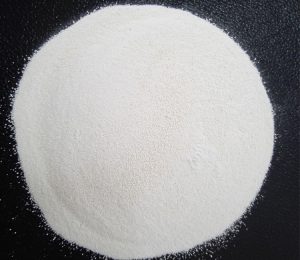
Manganese Glycinate is the third generation of trace mineral feed additives. It is manufactured with metal ion bound to glycine molecule which form ring compound with proper structure. This organic ring compound is very stable when passing the pre-intestinal volatile environment which allows the organic manganese to reach the target organs and tissues to maximize the utilization of trace minerals. At the target organs or tissues, the Manganese Glycinate is absorbed as a whole molecule by the way of peptide path and amino acid path. Meanwhile, the metal ion was bound into a complete molecule and this reduces the antagonistic functions. The best bioavailability of Manganese has been well ensured as all mentioned above.
Manganese Glycinate offers less ruining to other nutritional ingredients in the feed like vitamin, protein, etc. It also offers better palatability. These have improved the feed quality and feed efficiency.
Specification of Manganese Glycinate:
Product Manganese Glycine Moisture As Pb Cd Manganese Glycinate 22.0% min. 25.0% min. 8.0% max. 10ppm max. 20ppm max. 10ppm max.
Benefits of Manganese Glycinate:
| Species | Target | Benefits | |
| Swine | Piglet | 1 | Improving the piglet daily body gain and increasing the feed conversation rate; |
| 2 | Improving piglet bone growth and preventing osteoporosis; | ||
| 3 | Preventing piglet nutritional anemia; increasing the survival rate. | ||
| Fattener | 1 | Increasing the daily body gain rate and feed conversation rate; | |
| 2 | Improving the meat quality. | ||
| 3 | Improving the bone growth condition. | ||
| Sow | 1 | Improving the reproduction performance and decreasing the piglet mortality; | |
| 2 | Improving the sow health condition and preventing the hoof diseases including hoof cracking. | ||
| 3 | Improving the sexual organ and prolonging the production life. | ||
| Poultry | BroilerLayer | 1 | Improving the growth performance and increasing the breast muscle weight; |
| 2 | Improving the crest color and offering better meat color when slaughtering; | ||
| 3 | Improving the quality of eggshell, increasing the egg appearance, and decreasing the proportion of non-shell eggs. | ||
| 4 | Increasing the laying rate. | ||
| 5 | Increasing the hatching rate of eggs;. | ||
| 6 | Improving the growth condition and preventing hook diseases. | ||
| Ruminant | DairyBeefEquine | 1 | Increasing the number of new born calf, increasing the survival rate, and increasing the probability of female calf; |
| 2 | Increasing the growth rate of animals; | ||
| 3 | Preventing the ovarian diseases; and preventing milk fever disease on high production dairy cows. | ||
| Aquaculture | FishShrimp | 1 | Improving the growth condition; |
| 2 | Decreasing the fatty content and improving the meat quality | ||
Suggested Dosage (into complete formula feed):
| Species | Target | Suggested Dosage (into complete formula feed) |
| Swine | Piglet | 100g~150g /MT |
| Fattener | 80g~100g /MT | |
| Sow | 100g~150g /MT | |
| Poultry | BroilerLayer | 250g~350g /MT |
| Ruminant | DairyBeefEquine | 0.75g/head/day |
| Aquaculture | FishShrimp | 50g~100g/MT |
Important:
The above suggested dosages are based on general animal condition as far as we know and these are only for your reference. For the actual required dosage please get instruction from your nutrition advisor.


